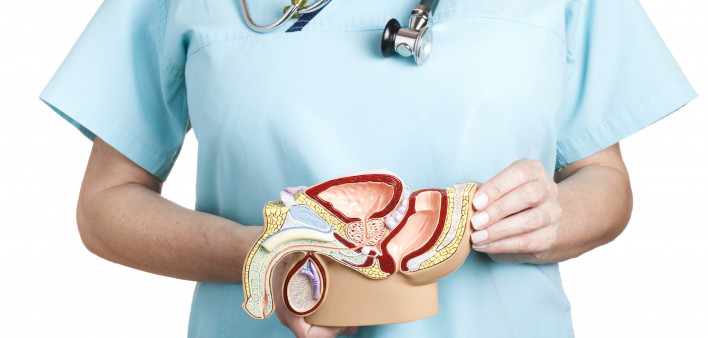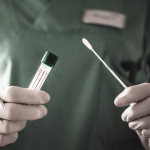Treating high-risk anal tissue changes with a self-administered 5% imiquimod cream resulted in fewer follow-up treatments and more total remission of potentially precancerous cells compared with surgery alone.
That’s the finding of a paper published in PLoS One connecting variants of human papillomavirus (HPV), a common sexually transmitted infection, to anal cell changes. This is important because anal cancer is on the rise in the United States, including among people living with HIV.
HPV can cause anal and genital warts, precancerous cell changes known as dysplasia and neoplasia and anal, cervical and other types of cancer. Screenings like Pap tests—best known as a screening test for cervical cancer—can detect abnormal anal cell changes at an early, more treatable stage. HPV vaccination can prevent warts and precancerous changes too.
Carmen Hidalgo-Tenorio, of the infectious disease department at Vergen de las Neivas University Hospital in Granada, Spain, and colleagues conducted a sub-study of a previous longitudinal, observational sub-study of an earlier trial on the role of antiretroviral treatment in clearing HPV strains. It followed 405 gay and bisexual men with HIV at one center from 2010 to 2018. The men’s median age was 36; 30% of participants were younger than 30 at time of their first appointment. Sixty percent were between 30 and 50 years old. Nearly all participants were from Europe (96%); the remaining participants were from Central America. Thirty-one percent had a history of anal/genital warts, and a quarter had a history of syphilis.
The men had been living with HIV for a median of two years. Eighty-six percent were on antiretroviral (ARV) treatment at the start of the study but had been on treatment for a median of just four months. Eighty-five percent of the total participants had an undetectable viral load (below 50) at baseline. About a quarter had a history of AIDS.
At enrollment in the study, the men had two anal swabs and two anal canal swabs taken to analyze cell changes. The researchers also used the swabs to categorize the HPV strain present in samples as either high risk or low risk for causing anal cancer. It’s still unclear exactly which variants of HPV are associated with anal cancer as opposed to cervical cancer, but the researchers selected 18 variants, including strains 16, 18, 26, 33 and 35, as high risk.
Then they tested for gonorrhea, chlamydia and other sexually transmitted infections. Four to 12 weeks later, participants returned for high-resolution anoscopy—a procedure similar to a colposcopy in cervical cancer that is not commonly available in the United States. Participants with HPV variants considered low risk for anal cancer came back a year later to receive the same swabs and anoscopy.
Those with HPV variants considered high risk for anal cancer had two options, and that’s what this study evaluated. Before 2013, the only option was removal of the abnormal cells and surrounding tissue with an electric scalpel. By 2013, though, data have shown that the application of topical 5% imiquimod cream was associated with 61% response rate in people with HIV.
In addition, between 2012 and 2014, men with low-risk abnormal cells and no evidence of HPV variants 16 and 18 received the HPV vaccine.
Starting in 2013, participants had the option of using imiquimod cream for 16 weeks, using a preloaded single-dose insulin syringe to apply the cream on Mondays, Wednesdays and Fridays. After each treatment course was done, if anoscopy revealed that the abnormal cells were still there, the participants had the option to keep using the cream three times a week for two more weeks or to have the cells removed by surgery. If abnormal cells had resolved, they were followed annually with swabs and anoscopy to monitor recurrence of the cells.
Overall, the incidence of potentially precancerous cells dropped dramatically between 2010 to 2018—43% in 2010, compared with 4% in 2018. No participant who received any treatment for potentially precancerous lesions progressed to anal cancer. Three participants died of unrelated causes (hepatitis C–related cirrhosis of the liver, lung cancer and lymphoma).
Of those who received treatment, 47 of the 407 participants received surgery as first-line treatment, and 32 received imiquimod cream as their first-line treatment. Surgery was sufficient to remove the precancerous cells for good in 41 participants (87%), and imiquimod alone was enough to resolve precancer in 31 people (96%). In addition, five participants received imiquimod treatment after recurrence or failure of surgery.
Of those receiving imiquimod as first-line treatment, 3% required the extra two weeks of the cream to remove the lesions. By contrast, 11% of those who received surgery to remove abnormal cells at high risk for turning in to cancer required a second surgery. Still, total clearance of all potentially cancer-causing variants of HPV occurred only in 29% of those treated with imiquimod.
When the researchers looked at HPV variants and development of more advanced precancer, they found that the majority of men did have some HPV variants: Three out of four (77%) tested positive for variants the researchers considered high risk for causing cancer. Similarly, 73% had low-risk HPV variants, and 58% had both.
What the investigators found at the end of the study was that all but one participant with a high-risk HPV variant who received imiquimod cream, either as first-line treatment or for a recurrence after surgery, saw their abnormal cells completely disappear. In the one person who didn’t, it was because of discontinuation due to burning and stinging around the anus. Researchers attributed those reactions to misuse of the cream.
Of interest, one HPV variant (HPV 11) previously associated with low-grade precancerous changes was in this study associated with high-risk cell changes. The other HPV variants associated with possible high-risk cell changes were HPV 16, 18, 53, 61 and 68. A history of AIDS and a lower all-time low CD4 count were also associated with potentially high-risk anal cell changes.
What this all means for preventing cancer remains unclear, though. The HIV Medical Association recommends that people with HIV, a history of receptive anal sex (bottoming) or a history of anal or genital warts receive anal Pap tests to detect HPV-related abnormalities. And multiple international studies have shown that routine anal screening for people with HIV is associated with lower anal cancer rates. But the Centers for Disease Control and Prevention is waiting for the results of the Anal Cancer HSIL Outcomes Research (ANCHOR) trial to determine how and when to screen for and follow up on anal abnormalities.
“It remains controversial whether the treatment of [high-grade anal intraepithelial lesions, or HSIL] prevents the subsequent development of [anal cancer], and no standard approach has been established, so that treatments vary among centers according to their resources and experience,” wrote Hidalgo-Tenorio and colleagues. “Self-administration of 5% imiquimod was a highly effective therapeutic strategy against HSIL in this series of HIV-positive men who have sex with men.”
Click here to read the full study.







Comments
Comments